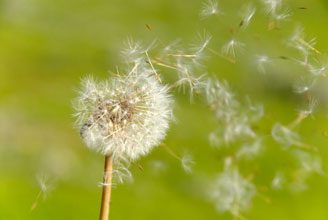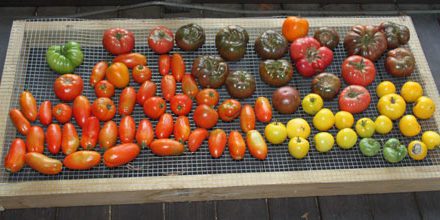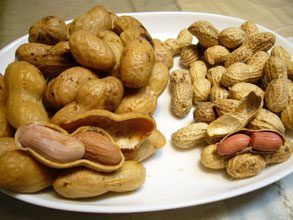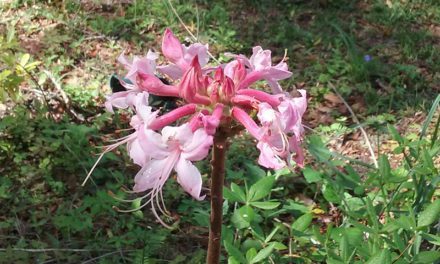 White flag. I surrender. I have expended my last vestige of energy on those cruel invaders. How disheartening it is to finish weeding a bed, only to find that where I started is already under siege. I’m not alone. All of my gardening friends are similarly afflicted.
White flag. I surrender. I have expended my last vestige of energy on those cruel invaders. How disheartening it is to finish weeding a bed, only to find that where I started is already under siege. I’m not alone. All of my gardening friends are similarly afflicted.
Our gardening conversations (by phone, of course) consist mostly of griping about weeds. The answer to “Did I tell you about_xxx_weed” is almost always “Yes,” because we’ve nattered the subject to death. We’re all weary of weeds.
Can anything be done about them?
Well, probably not. The soil seed bank is the only bank around that still pays more than minimal interest and dividends. Your savings account may languish, almost inactive, while the soil seed bank expands exponentially. Many weed seeds are viable for 40 years or more, and since you get a new crop every year, those 40 years stretch into eternity. Depressing, isn’t it?
Have you ever heard the phrase “Money makes money and the money money makes makes money”? Add a few commas and it makes sense. Now, just replace the word ‘money’ with ‘weed seeds.’ Didja’ get it?
Most horticultural advisers encourage IPM “Integrated Pest Management,” so why can’t they come up with an IWM “Integrated Weed Management” program? Well, guess what! They have. But it’s designed for crops, not for our treasured flower beds.
We all know what to do; remove weeds before they set seeds, and use mulch to inhibit germination. Hah! Some weeds, like Chamberbitter, can set seeds when they’re only and inch or two high, and they can get that high in a day. Mulch is always good, but if there is a weed in the neighborhood, the seeds will be blown into the mulch and go to town. I’ve even transferred all the plants I want to keep to a ‘nursery’, while I laid down two layers of cardboard on the bare bed. I soaked the cardboard and added about 3 inches of new soil, and carefully dug through the cardboard and replanted the plants and added mulch. It took less than a week for weeds to homestead there.
A weed is just a plant in the wrong place. Right? Margot Rochester, the late gardening writer said something like, “If you can’t change the garden, change the gardener.” So I am going to try to change my gardening attitude and look at weeds as wonderful additions to my garden.
Just look at those sweet little leaves of Chamberbitter. They make a tasty and tangy addition to salads. A delightful filler for bouquets. If you don’t mind all the seeds that drop on your tablecloth.
All parts of Florida Betony are useful. You can make tea from the dried leaves, and the roots are edible tubers. Some call it the Florida Radish. If you’re looking for a pretty pink pickle, add some beet juice to the brine you use for the roots. I can guarantee that no one will know what they are when you serve them.
Enter Purslane. The darling of French chefs. This spreading succulent is kin to the common Moss Rose, whose seeds are edible, but in this case, we use the leaves. Tastes a little sour, kinda’ like sorrel. Can be used like spinach; raw or cooked. It actually has more Omega 3 fatty acids than any other plant source in the world, and it’s absolutely loaded with vitamins. Who knew?
Oxalis stricta. Wood Sorrel. This is the one with the tiny yellow flowers. The leaves have a lemony taste, so prepare to pucker up. These seem to be inordinately fond of the soil in my potted plants.
Chickweed is a cool season plant, found everywhere in spring. It’s quite popular in green ‘smoothies.’ I guess that depends on your definition of popular, though. It grows in clumps, and the entire clump is harvested. Also good as a salad green.
That #%#& Smilax. This chameleon-like vine can take lots of forms, and it’s almost impossible to eradicate once it gets a foothold. However, it does have a few redeeming qualities. Really?? The green shoots are sometimes called Florida Green Beans, and are said to taste like asparagus. I’ve actually seen Laura Lee pop a few in her mouth. They can be eaten raw or cooked. The roots can be used like almost any edible tuber; boiled, roasted or baked.
Sweet Vi-o-lets… sweeter than the roses. I look forward every spring to the profusion of Johnny Jump Ups and wild violas that pop up everywhere in my gardens and lawn. Of all the so-called weeds, this is the only one I welcome into my garden. The little flowers make very pretty decorations on any iced pastry. A cupcake with a few violets on the icing is sooo pretty for teas and little girls’ parties.
Dandelions. Everybody has dandelions. What kid hasn’t plucked a dandelion and blown the seed pod away? Between the kids and the wind, no wonder they’re so profuse. If it didn’t have such a bad rep, it could even be considered pretty. Dandelion wine, popular with the Victorians, is actually a fermented tea; more of a cordial than a wine,– usually associated with little old ladies sitting on antimacassar covered chairs, sipping it from tiny glasses.
Dollar-weed would be a great garden plant if it weren’t so enthusiastic. It looks like a miniature Farfugium. It has even been suggested to use it in place of turf for shady and moist areas. No mowing. You can use the leaves for salad, but avoid the stems; they’re bitter and stringy.
Now here is the big caveat. Don’t ever eat, or even taste, anything you find growing in your garden or in the wild without knowing exactly what it is. Remember the mystery writers’ favorite, the Angel of Death mushroom?? One bite and you’re a goner.
So… have I convinced you that weeds are wonderful? No? Me, either. It would take a lot more than this article change my mind. Still, it’s good to know that in these troubled times, if our food supply chain is interrupted, we could, without any care or tending, have a bountiful crop of weeds.
Lucky us.







